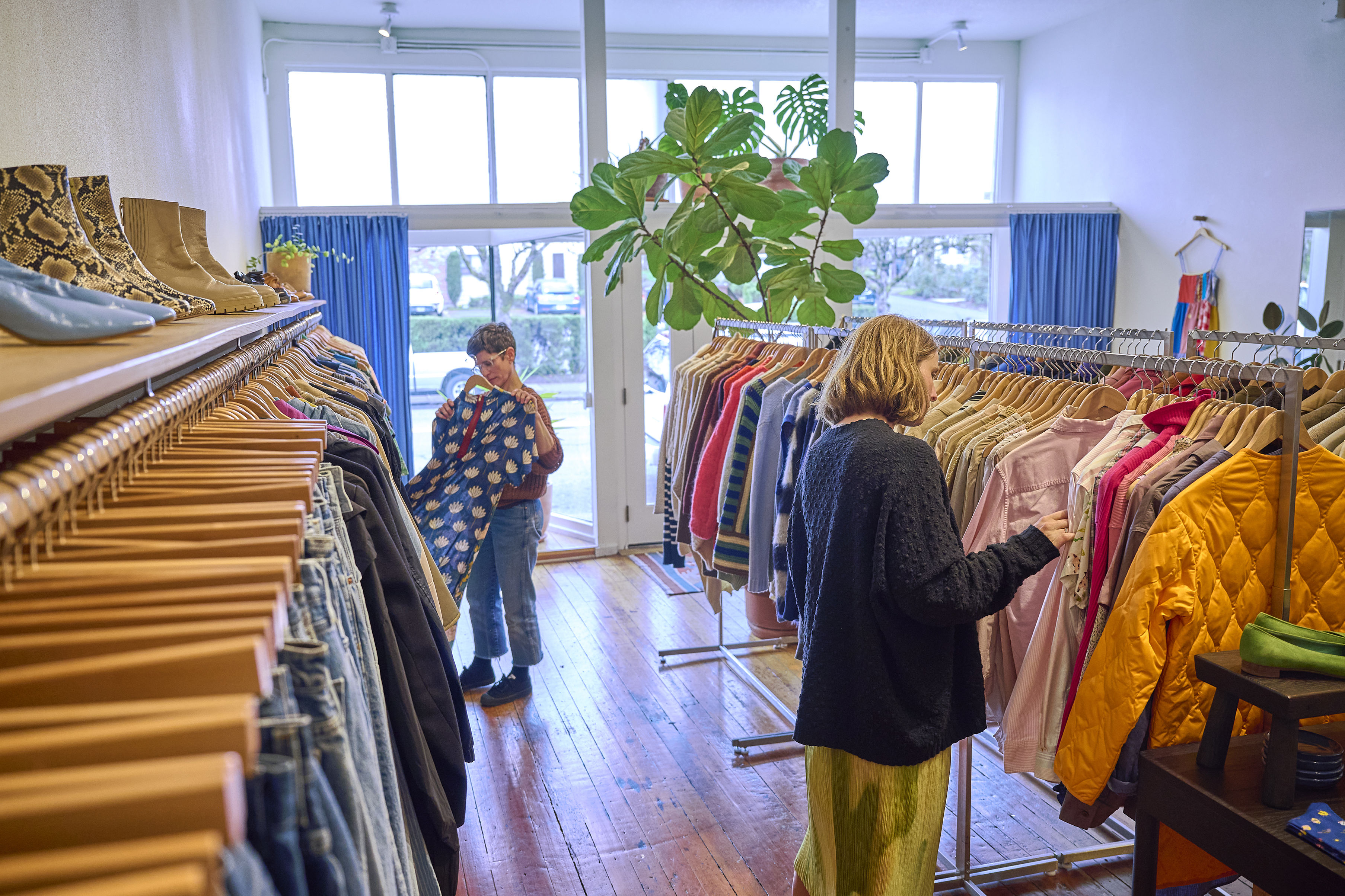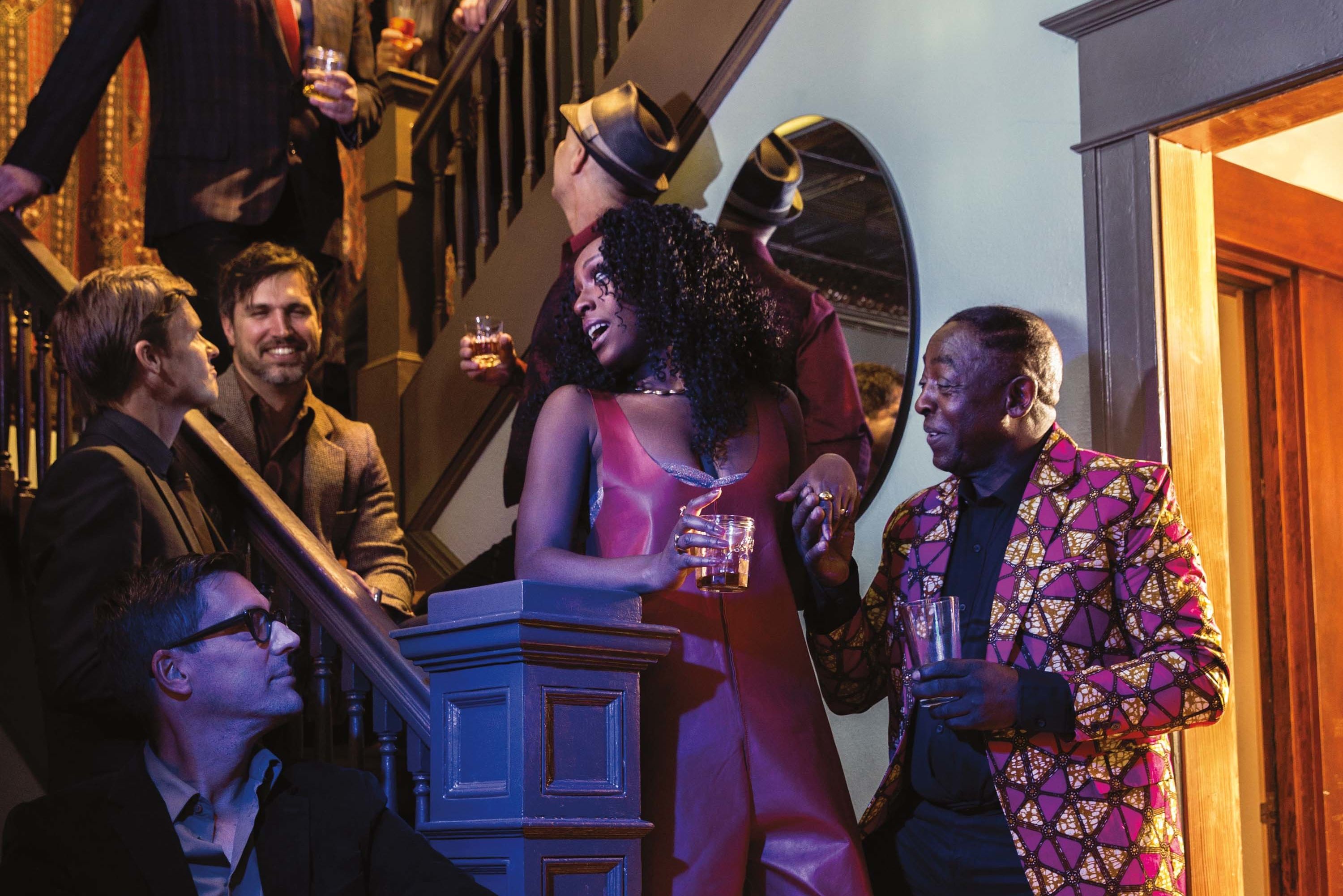
Portland Soul Singers Ural Thomas and Blossom Get Dressed Up to Get Down
Several hours—and an almost-empty plate of chocolate chip cookies—into the life tale of Ural Thomas, we sit in the kitchen of the Mississippi-area home he built by hand. (His previous house, destroyed by a fire and a bulldozer, once embroiled him in years of fighting city hall. We’ll get to that.) The 78-year-old alternates between storytelling, song, and deep laughter. His tiny great-granddaughter crawls onto the lap of his band mate Scotty Magee. Thomas’s partner of 40 years, Rosie, chimes in over Law & Order reruns.
This isn’t what you picture when you think “hot local band,” but Thomas has never been typical. The almost-octogenarian leads a seven-man soul and funk band that seamlessly blends his own decades-old songs with new material in famously emotional, dance-packed live shows. Ural Thomas & the Pain, with Magee on drums, boasts string, key, and horn players, with résumés including work with the Five Fingers of Funk and Cherry Poppin’ Daddies. This fall, the band releases their first full-length album after six years together.
“I just believe in it. If we sell four billion or one, I’m happy,” Thomas says. “It’s more than finishing a record. We’ve accomplished so much.”

Designs by THOR custom pinstripe jacket, starts at $1,250 at Designs by THOR; Collier paisley dress shirt ($185) and silk tie ($45) at Collier
Image: Holly Andres
Ural Thomas’s preacher father, Colonel, moved the family to Portland from the tiny town of Meraux, Louisiana (“Population 924!”), during World War II, part of a large wartime migration of African Americans here. Colonel gave sermons on weekends; during the week, he did maintenance for Ralph Lloyd (of Lloyd Center) and drove for Fred Meyer (the man). Ural’s mother played guitar in church, and Thomas was the only one of 16 kids to catch the music bug.
“She slapped chords,” Thomas recalls of first performing when he was about 4. “I learned music from millions of people, but she made me interested in it. The sounds coming out, the voices of the people singing in church. I remember thinking it was the thing I wanted to do for the rest of my life.”
At Jefferson High School, Thomas made a name for himself with his magnetic presence, coiffed pompadour, and soulful voice. Meanwhile, his city—in a state where the constitution originally banned black settlers—remained deeply segregated as it entered the civil rights era.
“Off of MLK was the only black motel in town,” Thomas says. “It was the only place entertainers were allowed to stay when they came. Etta James stayed there, and I met her when I opened shows for her in the ’50s. I was in love with her. She spoke her mind.”
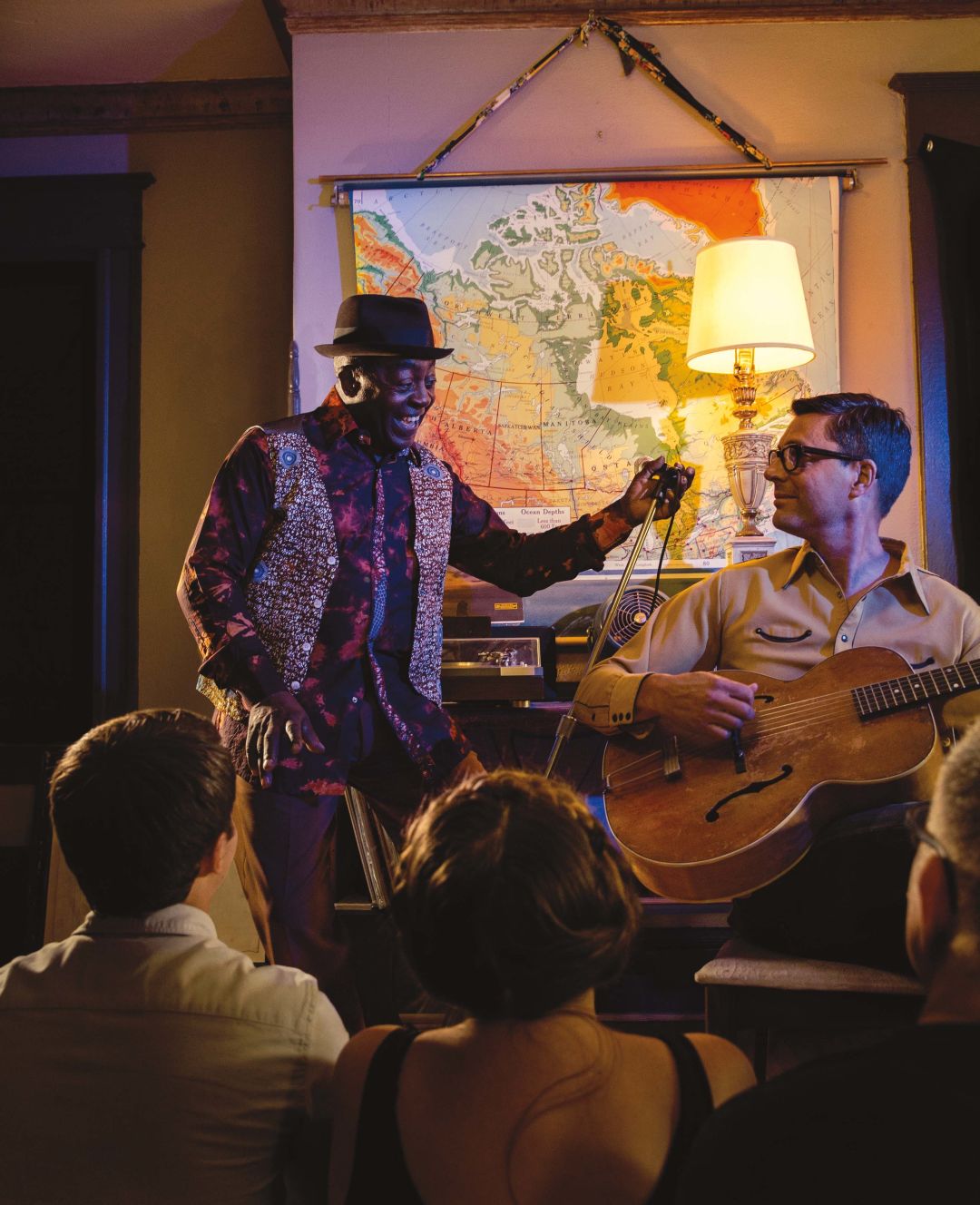
On Ural: N’Kossi marble cotton shirt ($75) and printed vest ($65) at N’Kossi Boutique de l’Afrique; Vintage fedora, $85 at Rebels & Heroes On Brent: Vintage western snap shirt, $150 at Rebels & Heroes
Image: Holly Andres
The young singer joined a handful of other men as the Monorays (often billed as the Monterays): a 1962 photo shows them decked out in checked sport coats, white button-downs, and matching black cravats. The all-black, singing-only group paired up with the Invaders, an all-white rock band known for driving a hearse with their name painted on the doors. The supergroup played to throngs at the Crystal Ballroom while Thomas crooned—always bedecked in fashionable outfits.
“I believe every time I hit the stage I should be wearing something different,” says Thomas, who gets giddy on the subject of style. He cites muses like the slick-suited Little Richard and his feathered favorite, Liberace. For the Monorays’ outfits, he’d take thrift-store finds or bellboy uniforms from his hotel day job and whip them into stage garments with needle and thread. He’d add tuxedo ruffles to a dress shirt, or pull out a jacket sleeve’s silk lining to balloon into a matador-inspired silhouette.
“I could sew so quick, I could put five outfits together in the car on the way to Seattle,” he says. “By the time we got there we had a brand-new outfit. I tried to make them look like a tuxedo just out of Paris.”
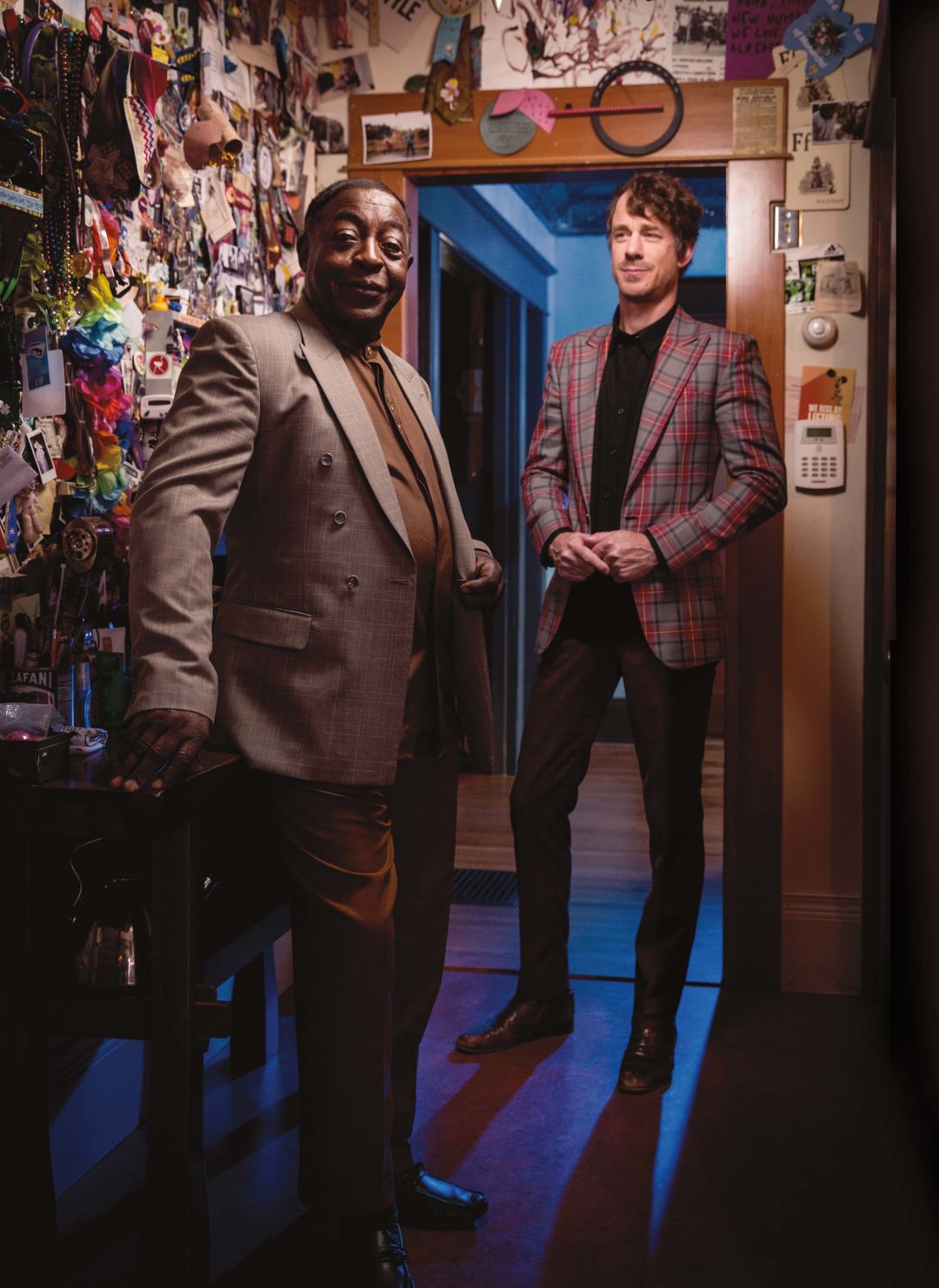
On Ural: Designs by THOR double breasted jacket, starts at $1,250 at Designs by THOR; pants and shirt, model’s own On Scotty: Designs by THOR maroon pants ($350) and plaid tuxedo peak jacket (starts at $1,250) at Designs by THOR; Wool & Prince dress shirt, $128
Image: Holly Andres
It was the full package: voice, leadership, fashion. “Ural should have been a star years ago,” says Paul Knauls, once owner of ’60s Portland venue the Cotton Club, where Big Mama Thornton and Sammy Davis Jr. played. “He was ahead of his time. He is just a spectacular entertainer, you know, and a wonderful personality. They packed the house every night with Ural as the leader.” Thomas’s early-’60s career took twists and turns, though. He sat in with Northwest legends like Paul Revere and the Raiders and the Kingsmen. He landed in LA, working in a dress shop while still performing. He tells of hopping onstage with Mick Jagger. He cut a single in 1967 for UNI, the label that launched Neil Diamond and Elton John. “Pain Is the Name of Your Game,” an emotional tale of abandonment, would foretell some of his life to come.
That same year, he headed to New York to join an Apollo Theater revue produced by Otis Redding: dozens of acts, including James Brown. Ever the optimistic collaborator, Thomas had his heart set on teaming up with Redding and Brown. The stars were less keen. “I was so excited to meet them,” he recalls. “I thought we could set the world on fire. But they didn’t want to share the stage.” His tone is bewildered even now. “I believed we had so much to offer together, but I was an obstacle to them.”
Thomas says the experience led him to pass on Redding’s offer to join a package-deal Japan tour. He released a live album, “Can You Dig It”—with a photo of him taken by James Brown—but feeling a lack of label support, he decided to come home in 1968. He worked as a hotel bellman and a Swan Island machinist, with weekends at the Cotton Club. He settled into Portland life, but trouble awaited.
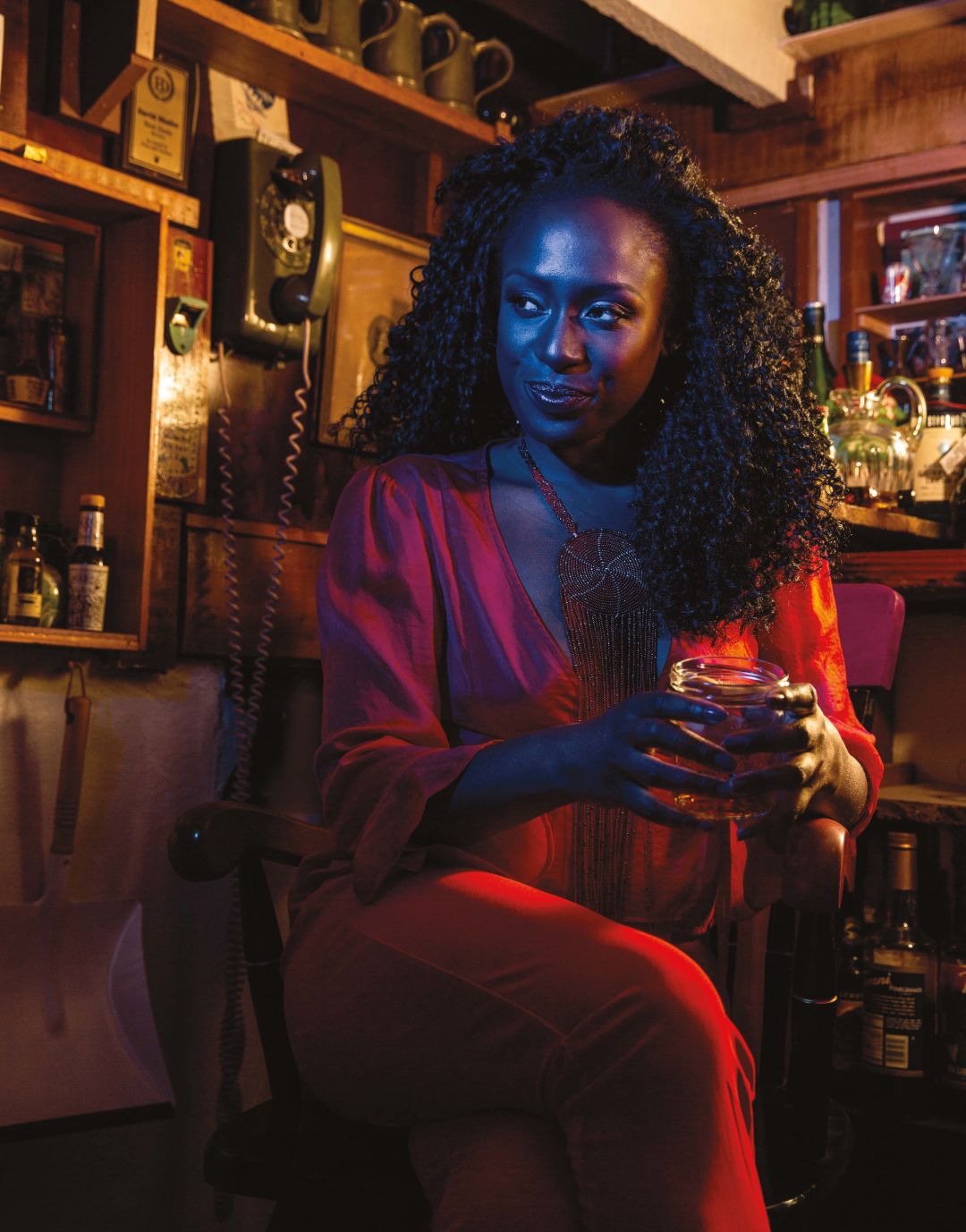
Topshop wrap top ($55) and Leith pleat trousers ($55) at Nordstrom; Ghanaian beaded necklace, $65 at N’Kossi Boutique de l’Afrique
Image: Holly Andres
The beginnings are fuzzy, and the details complicated and somewhat fogged by time. But, for years, Thomas fought the City of Portland over ownership of the Albina neighborhood property where he was slowly building a home in the ’70s. By March 1980, an Oregonian article described a battle for the land, along with assertions like “Thomas is an urban squatter” and “It’s easy to dismiss Thomas as ‘looney,’ and some city officials have.” Soon after, a basement fire took a chunk of his house. The city then razed the structure.
Thomas persevered. He tells of spending months working by day, sleeping under the Fremont Bridge, and rebuilding on his Mississippi plot in between. “I’d take my white work shirts and wash them in the river,” he says. “When I wasn’t working, I came and worked on the house. Every penny I had went into building this home.”
Eventually, after a show of support from the neighborhood, the city relented. Now Thomas and Rosie live on that same spot in a humble home built almost entirely from recycled materials and donations.
While the city dispute raged and faded, Thomas’s house attracted another kind of attention with locally legendary Sunday jam sessions. Almost every weekend, from Nixon to Obama, he would spend Saturdays making a concoction he dubbed Lallyhoosh, stuffing pots with tomatoes, root vegetables, and ground beef to feed dozens of musicians and gawkers who would pile into his backyard makeshift practice space. (When I ask how long those Sunday jam sessions would last, Rosie yells over Jerry Orbach: “Forever!”) The sessions started drawing crowds. And at one, Ural Thomas began morphing to Ural Thomas and the Pain.

On Blossom: Sum Eram Ero Leather jumper, $448; Topshop glitter bandeau bodysuit, $35 at Nordstrom; Seaworthy Festonne necklace ($150), Totis ring ($48), and Arium ring ($97). On Ural: AG Jeans sueded sateen black jeans, $178 at Nordstrom; Wool & Prince dress shirt, $128; N’kossi Three Friends African print jacket, $200 at N’Kossi Boutique de l’Afrique
Image: Holly Andres
Scotty Magee, now 44, was known in indie music circles for drumming stints in both Loch Lomond and Y La Bamba, but also as Cooky Parker, a DJ persona specializing in rare soul. He discovered Thomas’s singles “Push ’Em Up” and “Smile” when Erik Issacson, owner of Mississippi Records, rereleased the album in 2011. Magee got Thomas’s number from him. “I thought we’d talk about getting together for music for five or 10 minutes,” Magee recounts. “Ural immediately started talking about a dream he’d had the night before. We talked for an hour. And finally I said, ‘Hey, you want to jam?’ And he said, ‘Yup.’”
So, in 2013, Magee walked into a packed Sunday session to try to interest Thomas in a one-night show. “He’d told everyone I was there to start a band, so when I walked in the drummer just stood up and said, ‘Your turn,’” Magee says. They played Ben E. King’s “Stand by Me”; at the end of the session, Magee asked Thomas if he wanted him to assemble a band. Thomas said yes.
I ask Thomas if he found it overwhelming or exciting to launch a band at a time when many of his contemporaries were enjoying the retirement life. Before he can answer, the Law & Order dun-dun rings out and Rosie yells, “He was so excited. He finally found guys who wanted to do music like him. Ural was serious about wanting to be in a band and doing what he loves—music and traveling.”
Magee assembled the Pain through scene connections, and the act debuted in 2013. In 2014, Willamette Week named them the city’s Best New Band. Today, Magee handles most of the logistics. “I lead the band day to day, but as far as what we want, Ural is the true leader,” the drummer says. “As soon as he says no to something, I would never pressure him. But the cool thing about Ural is he says yes.”

On Blossom: ALC satin printed blouse ($375) and pant ($395) at Nordstrom; Lunasol Lunar post earrings, $68. On Ural: Vintage flatcap, $45 at Rebels & Heroes; 1901 multidot shirt, $70 Nordstrom; Designs by THOR jacket, starts at $1,250 at Designs by THOR. On Scotty: Vintage western embroidered snap shirt, $125 at Rebels & Heroes; Levi’s 510 Skinny jean, $89 at Nordstrom
Image: Holly Andres
Now, as Ural Thomas and the Pain are in their sixth year, with a new album out on September 28 aptly titled The Right Time (catch the release concert the next day at the Aladdin), their fan base spans decades. From the tiny toddler who wandered up during a show in a small pavilion at the Sou’wester Lodge on Washington’s Long Beach Peninsula to a packed night at Goodfoot Lounge, sweaty grandfathers next to swaying millennials, Thomas’s magnetism—the same one he’s blessed this city with for 70 years, even when we maybe didn’t deserve him—draws them in and brings them joy. Just like he always wanted.
“It doesn’t matter what happens now,” Thomas says. “We’ve already gotten so much from each other. If things were to end tomorrow, I’d have no regrets.” Thomas and Magee look affectionately at each other. “I really think we’ve been put together for a reason. We have more than one lesson to teach the world, and we’re showing the people unity. I don’t think anybody in the world could be more happy than I am.”
Meet Queen (R&) B
Blossom is obsessed with Grease. To be more exact, the 29-year-old neo-soul singer is obsessed with Stockard Channing’s portrayal of the tough-talking leader of the Pink Ladies, Betty Rizzo, in the 1978 musical.
“There’s a line in the movie that’s like, ‘A hickey from Kenickie, that’s a prize.’ And that’s the mind-set in dating these days,” she says. “Guys think we’re lucky to be with them. And Rizzo was trying to say, no, you’re lucky to be with me.” Tough as she is, Rizzo’s character grapples with loneliness and heartache, both themes Blossom explores on her upcoming album, Maybe, out on Eyrst this fall. “I wrote this project for my other lonely lovers,” she says. “There’s so many ways that you can be lonely: not knowing yourself is a sort of loneliness, having people around you that don’t care about you or almost manipulate you is a feeling of loneliness, and the things that come with that.”

N’kossi print pants, $65 at N’Kossi Boutique de l’Afrique; Topshop striped tube top ($10) and Phillip Lim bomber ($795) at Nordstrom; Seaworthy Epiphyte silver earrings, $238. On couch: Veil & Valor Pounce coat, $1,100
Image: Holly Andres
This dive into emotional undercurrents is nothing new for Keisha Blossom Chiddick, as evidenced by her last album, 2017’s Tease, which offered lyrical representations of modern love over jazzy slow jams. A professional musician for six years, Blossom performs frequently about town under her floral middle moniker, working with different collaborators—producer Neill Von Tally, electronic musician Damon Boucher, and her most recent live partner, Snugsworth, known for coproducing A$AP Ferg’s gold-certified “Shabba”—who create beats to back up her smoky vocals.
From the sultry style in her “Black Magic Woman” music video to a night this summer at the Alberta Street Pub, where she kicked off her lobster-embroidered smoking slippers to groove onstage, there’s no denying her commanding presence. And then there’s the music, ranging from smooth jazz to reggae rhythms, and sometimes defying categorization. “I call it neo-sensual,” says Blossom. “Because regardless of the topic, there’s always some sort of lust-filled factor in it just by delivery.” She talks as someone who has reached a new level of self-love, at ease with the lust and the loneliness. “I used to think I was a Sandy,” she smiles, “and then I realized I was a Rizzo.”
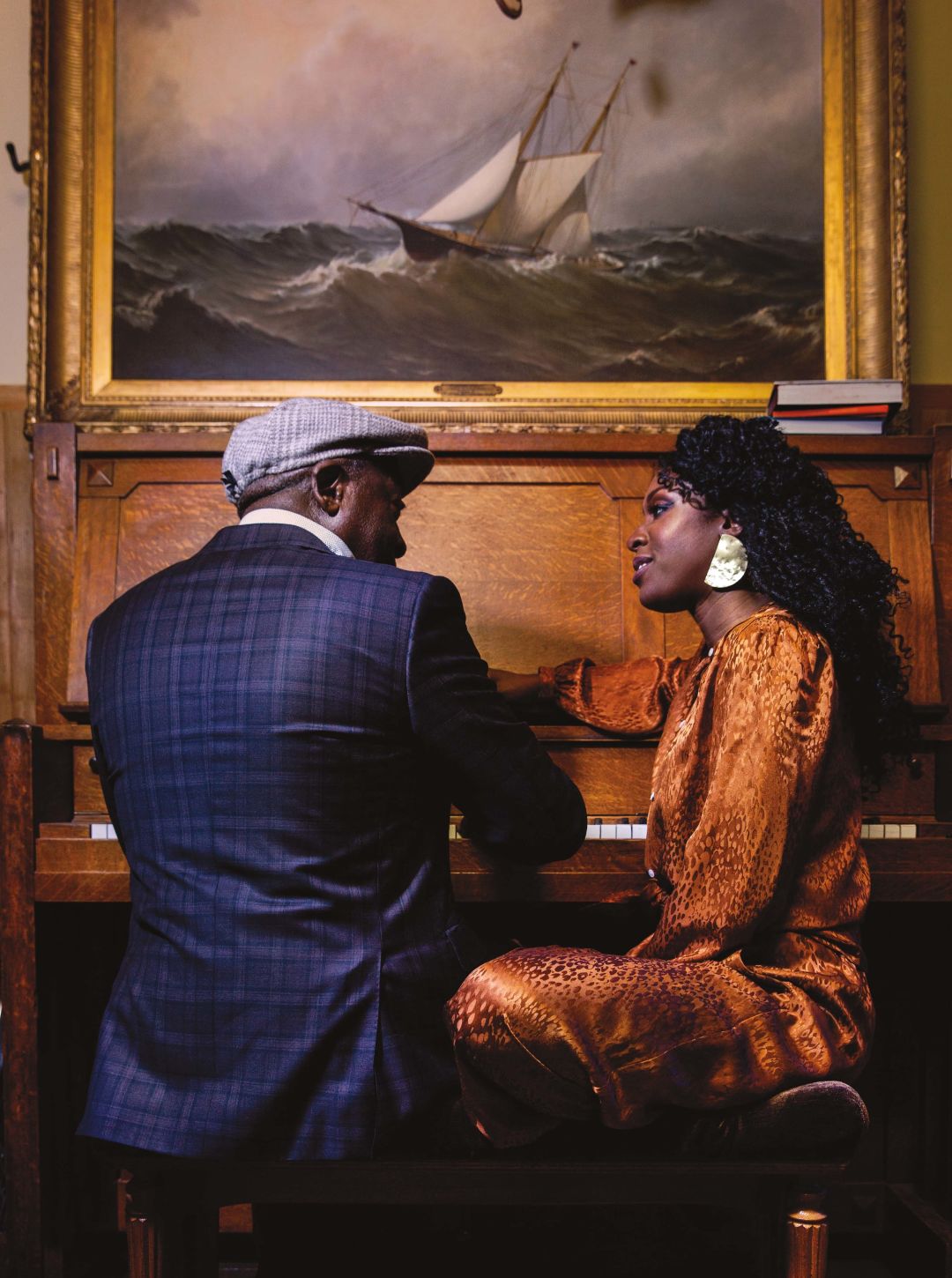
Image: Holly Andres
Photographs by Holly Andres / Written & Styled by Eden Dawn / Hair: Abibat Durosimi / Photo Assistants: JD White & Ryan Filgas / Wardrobe Assistant: Docia Nartey-Koram / Shot on location at the McCann-Shafer Household

